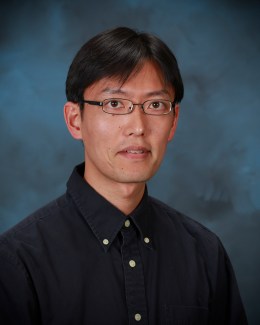
Scientist-inventors from the Department of Energy’s Oak Ridge National Laboratory will present seven new technologies during the Technology Innovation Showcase on Friday, July 14, from 8 a.m.–4 p.m. at the Joint Institute for Computational Sciences on ORNL’s campus.
The inventions are supported by ORNL’s Technology Innovation Program, or TIP, which provides targeted investments in new lab-developed technologies to enhance their commercial readiness. Since 2012, ORNL has invested more than $11 million in 49 projects, resulting in 37 commercial licenses and options with partners ranging from Fortune 100 companies to early-stage startups.
“ORNL’s researchers are creating next-generation technology for buildings, manufacturing, medicine and chemistry,” said Mike Paulus, ORNL Partnerships director. “The inventions selected for TIP investment show significant potential for commercialization.”
The showcase brings together inventors and commercialization professionals from ORNL with industry representatives for a morning of presentations followed by one-on-one meetings, tours and demonstrations.
The 2023 TIP projects to be presented and their inventors include:
Ultraclean condensing furnace, Zhiming Gao, Buildings and Transportation Science Division. By incorporating compact and cost-effective acidic gas reduction components, the technology achieves ultraclean flue gas and neutral condensate. The novel furnace design can remove more than 99.9% of acidic gases and other emissions.
Rapid droplet sampling interface, Vilmos Kertesz, Biosciences Division. This interface utilizes a versatile, ultrahigh-throughput and ultralow-volume chemical analysis methodology that enables chemical analysis of samples at speeds up to five samples per second through droplet ejection and capture in a continuously flowing open solvent stream coupled with mass spectrometry analysis.
Closed-cell insulation foams enabled by coated and evacuated nanoporous materials, Meghan Lamm, Manufacturing Science Division. This technology combines dual hollow filler materials embedded in a thermoset matrix to increase insulation performance and provide customizable insulation density. The foam is expected to have better fire and smoke retardancy.
Mixed plastic recycling by a tailored organocatalyst, Tomonori Saito and Md Arifuzzaman, Chemical Sciences Division. This recycling technology can simultaneously break down any condensation polymers into monomers in a low-energy green process. The catalyst can deconstruct condensation polymers at 100% conversion within two hours and can be reused indefinitely.
Accelerating the development of orally bioavailable therapeutics for beta-coronaviruses with structure-based molecular design, Jerry Parks and Brian Sanders, Biosciences Division. This technology is a potent and selective covalent inhibitor of the papain-like protease, or PLpro, of SARS-CoV-2. PLpro is a critical target for new therapeutics because it is essential for viral proliferation and dysregulates the host immune response.
Additional presentations include:
Unintrusive building leakage visualization and measurement using background oriented schlieren photography, Philip Boudreaux, Buildings and Transportation Science Division. Background oriented schlieren photography detects shifts in background texture to visualize transparent fluid flow in a sequence of images. It requires very small pressure differences between a building and the outdoors, so it does not require blower door testing and is therefore less intrusive to building occupants.
Methods for immunoregulation by modulating plasminogen-apple-nematode (PAN) domain-containing proteins, Wellington Muchero, Biosciences Division. This technology demonstrates a new screening method that provides a way to modulate immune responses in plants and animals. In human cells, this method can be used to inhibit cellular migration in cancer cells and SARS-CoV-2 viral spike protein binding. This method could be used in creating genetically modified plants that are resistant to pathogenic infections.
Register to attend the 2023 Technology Innovation Showcase. An online option is also available.
UT-Battelle manages ORNL for DOE’s Office of Science, the single largest supporter of basic research in the physical sciences in the United States. The Office of Science is working to address some of the most pressing challenges of our time. For more information, please visit energy.gov/science.







